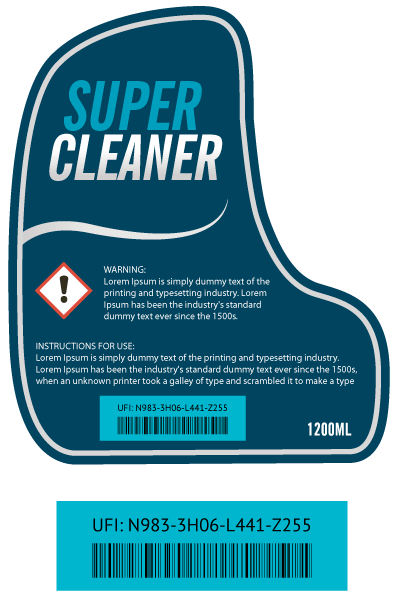Next, the demanded steps to be compliant with this new requirement (by 2020) will be described (10/01/2020: date updated to beginning of 2021). SIAM provides with personalized service to get your notifications done apart from CHEMETER which deals with the process in an intuitive way.
Who is affected by this?
According to the CLP Regulation, importers and intermediate users of hazardous mixtures are in the duty of notifying to toxicology. This obligation always falls into the EU legal entity; e.g. a provider without an EU address cannot replace to the responsible one with the EU address.
Which mixtures should be notified?
All mixtures classified with health and/or physical hazards need to be notified. In the case of biocides and plant protection products, apart from the previous obligation, they may have others derived from the Biocidal Regulation (BPR).
Which mixtures are exempted?
The following mixtures are exempted from notification since are not under Annex VIII regulations (they have their own specific legislation):
- Mixtures ONLY classified with environmental hazards
- Radioactive mixtures
- Mixtures under customs supervision
- Mixtures used for R&D purposes
- Medicinal and veterinary products, cosmetic products, medical devices and food and feeding stuffs
- Mixtures only classified as gases under pressure and explosives
When will it be needed to notify following the new rules?
All new products not previously notified according to the national legislation will be affected. The information will be submitted following the below deadlines depending on the who final user of the mixture is:
Which countries are affected by this?
member states of the EU. In the countries where the product is placed in the market, it is compulsory to submit a toxicological harmonised notification in the official language of the state.
But… what has changed?
The specific requirements per country have been replaced by a set of harmonised information requirements plus a new data format:
PCN (Poison Center Notification) + UFI
Therefore, in order to proceed with a new notification:
- UFI (Unique formula identifier): a code needed for the notification process, a compulsory label element.
- Complete chemical composition: concentration values or ranges of both hazardous and non-hazardous substances.
- Toxicological information: information of section 11 of the SDS will be submitted.
- Product category: depending on the main expected use, it will be assigned one of the categories listed under the European product categorisation system (EuPCS).
- Information on the sender and the product: trade name, color, etc.
- Classification and product labelling
- Packaging types and sizes
What about the products previously notified?
All notifications previously done will be valid till the end of the transition period, 1st January 2025, or till there is a change in the product.
Therefore,
- if the product requires an update due to changes on the composition, toxicological properties or product identifiers: New notification with the harmonized format is needed.
- if the product hasn’t suffered any changes: before the 1st January 2025 is needed to submit a new notification (data migration is not planned).
- if the product is no longer manufactured before the end of the transition period, there is no need of submitting a new notification.
How to proceed to get the UFI code?
The Unique Formula Identifier (UFI) alongside with the product name, allows poison centres to get an emergency response in a faster way ue to a quicker way of identifying the product composition and its hazards. The condition for assigning one UFI to several products is that all of them must share the same composition. The generation of these codes can be done directly with CHEMETER or with the ECHA´s generator tool.
It is required a new UFI code and a new label in case:
- the composition of the mixture is modified
- an ingredient is added, changed or replaced
- the provider changes the UFI code when in “mixture of mixtures” (MiMs) case.
It is needed to schedule a relabelling plan of all the existing products pto be able to add the code after the “UFI” acronym, as can be seen in the following image:

Any special case?
As in any Regulation we can find certain special cases:
- Identifier of generic product (IPG): when generating the dossier, the programme takes into consideration exceptions as the ones applied to the components “Generic product identifiers (IPG)” for substances like colorants, fragrances and perfumes for the concentrations specified in the Regulation.
- Mixtures in mixtures (MiM): in the cases where the information of the raw materials is not available at 100%, it is possible to use our provider´s UFIs alongside with the information of the known components. Therefore, it will be needed an active communication with our providers in the same way as we need to be ready to be asked about our UFI codes by our clients. Before communicating an UFI code to the downstream chain, the UFI code needs to be known by the toxicological information centres.
How can I submit the dossier?
The notification dossiers can be submitted through the ECHA submission portal. Additionally, some State members can provide with other alternative delivery form through their own system; however, all dossiers must follow the harmonized PCN format in order to be valid.
How can I keep the information updated?
Whenever your product changes in a way that concerns information requirements, this needs to be reflected in an update of the existing submission. Based on this, different situations can occur:
- The classification of the mixture changes due to a change in the composition new UFI code, dossier update and new product label would be needed.
- Cases where new information is added to the existing dossier; such as: change in the product name, repackaging or new toxicological information.
- Situations where new information replaces the outdated one; such as: change in the emergency phone number 24/7 or mixture classification change.




